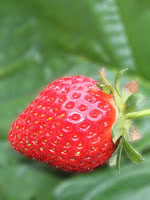Mon-Fri 9am - 5pm Mountain time
Albion Strawberry vs Grouseberry
Vaccinium scoparium
Fragaria ananassa Albion
CUSTOM GROW
Grouseberry is a native, low-growing deciduous shrub known for its edible red berries. In early summer, it produces small, urn-shaped flowers ranging from white to pink that attract bees and other pollinators. The berries provide an important food source for many types of wildlife, including game birds such as grouse, which gives the plant its common name. People can also enjoy the berries fresh or in baked goods, though they can be difficult to harvest in large quantities.
Spreading by rhizomes, Grouseberry forms dense, broom-like mats that help stabilize soil and prevent erosion, while also providing cover for ground-nesting wildlife. It is commonly found beneath conifers in open forests, subalpine meadows, and occasionally on rocky slopes in mountainous regions. It is well-suited for naturalization, ecological restoration, and soil stabilization projects.
Albion Strawberry is an Day Neutral (Long Day, Everbearing) hybrid that produces berries all summer and into fall. It is heat tolerant and disease resistant, and grows well in warmer climates. Its conical fruit, bright red color, and reliable firmness, make the fruit excellent for fresh eating, or in pies or jellies.

